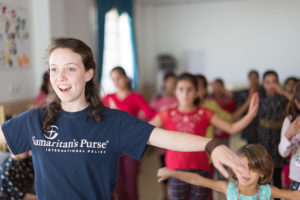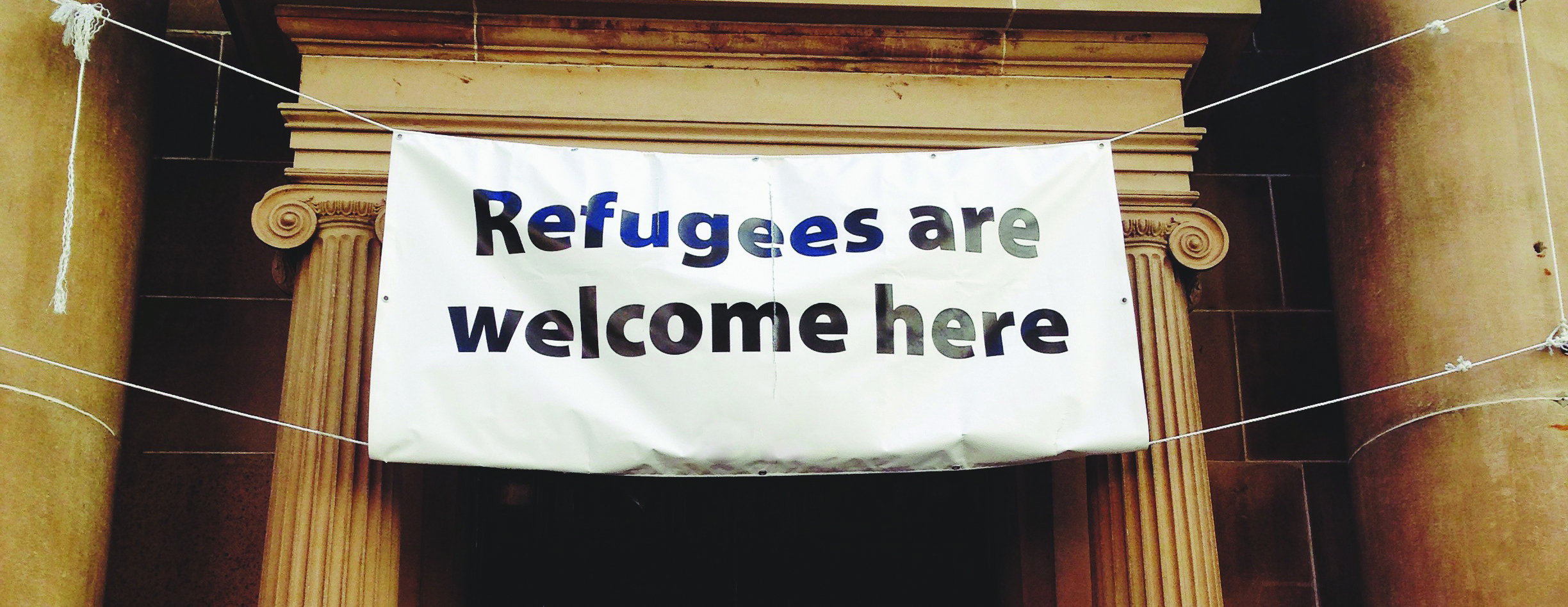Magazine
Lydia Mathis, a sophomore at Belhaven University, in Jackson, Mississippi, was inspired to help refugees after visiting Samaritan’s Purse Community Center several times last year. There she saw enrichment classes like sewing, painting, and cooking helping people recover from trauma along with their counseling.
It gave Mathis an idea – using dance classes as a form of therapy to help refugees as well.

“So, I designed my dance class with the center’s trauma therapist to work in the context of therapy,” she says. “The objective was to get the kids moving and their creativity flowing to help build their relationships with themselves and others using fun, expressive movement.”
Over the summer of 2017, Mathis spent five weeks at a Yazidi refugee camp in the Dohuk area of Northern Iraq to teach dance. The Yazidi are a Kurdish religious minority group that has been targeted and displaced by ISIS since August 2014.
“I built the structure and objectives with a lot of input from those at the center who have worked with the Yazidis for years, including the trauma therapist,” says Mathis.
Mathis taught ballet and modern classes to Yazidi youth but adapted classes after she assessed their needs. The end result was a class that utilized ballet, modern, and creative movement together. She taught classes to more than 60 children divided into two groups: one for 3- to 8-year-olds and another to 9- to 14-year-olds.
“Dance is a huge part of Yazidi culture, but many in the camp are not performing the traditional dances as a sign of grieving for those still in captivity,” Mathis explains. “As I got to know the kids and their families, I realized my class was an opportunity for them to get out of their tents and laugh and smile and move together. In the context of a camp, where … the homes they were forced to flee are gone, I realized how significant this class environment was.”
Mathis says that one of the greatest lessons she learned was that when dealing with trauma, even the small things count. It has deepened her desire to pursue expressive arts therapy as a career.
“Being able to achieve something new in a class, or just laughing and knowing you can come back tomorrow and try again are big things for children here,” she says. “I have also seen firsthand how trauma can take physical tolls on the body, which has furthered my desire to research and continue my education in movement and dance therapy.”
Elaina Loveland has been a professional writer since 1999. She is the author of two books: Creative Colleges: A Guide for Student Actors, Artists, Dancers, Musicians, and Writers and Creative Careers: Paths for Aspiring Actors, Artists, Dancers, Musicians, and Writers.




